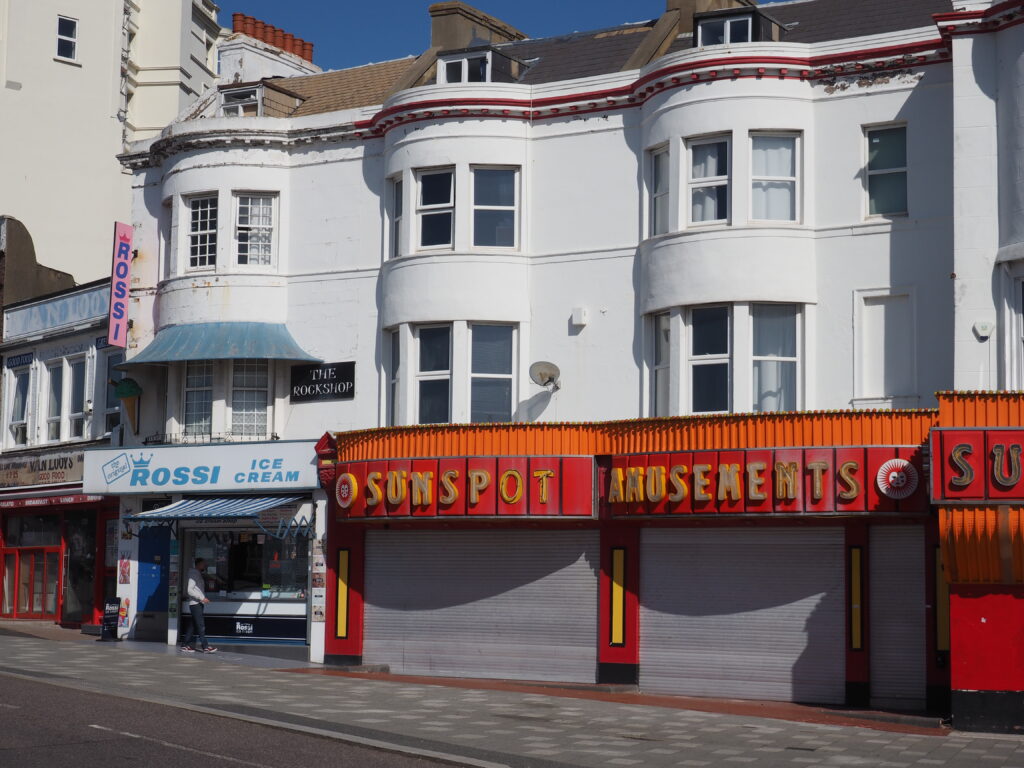At one time, Southend’s Golden Mile was the epicentre of the modern world of fun. Stretching an incongruous 650 yards from the longest pleasure pier in the world to the largest amusement park in the world, it was filled with pubs, cafes, restaurants, amusement arcades, rides and every type of delightfully wasteful way to spend your money, This was the raucous playground of the East End working man and his family and its heyday started from the opening of the railway line in 1856 to the fatal lure of the foreign package holiday in the 1960’s. At its peak, it boasted 5 million visitors a year.
However, few people realize that this is the site of Lower Southend, the original settlement to bear that name and many of the surviving buildings date from the Georgian and Regency periods. An 1823 guidebook described the Lower Town as “being about half a mile in length with respectable lodging houses graced by verandahs”. However, more salubrious developments were being developed in the Upper Town with its wide estuary views and soon the Lower Town was being described as “the unfashionable part of town“ – a description it was later to justify with relish.
Because of these early origins, many of the surviving buildings are protected as being of architectural or historic interest. However, time has taken its toll on many of them and the crude imposition of modern advertising and promotion has created a bizarre juxtaposition of modern and old, refined and crude, subtle and garish that in many ways encapsulates perfectly the atmosphere and character of the Golden Mile.
One of the more unchanged buildings is the Hope Hotel, listed of being of architectural importance, and reputed to have been used by Parker and the Nore mutineers in 1794, before the mutiny was put down and the ringleaders hanged. Slightly further to the east, the Falcon pub, also a protected building, is a good example of those “respectable lodging houses graced by verandahs.” Elsewhere, there are vestiges of graceful historic architecture above the C20 ground floors and modern signage that remind us of the elegant Lower Town that used to exist.

The bow fronted upper storeys of the short terrace at the western end, at the bottom of Pier Hill, point to an elegant past that is now difficult to reconcile with the modern reality. Elsewhere, many of the unprotected buildings have been cleared in preparation for the controversial redevelopment and “improvement” of this rowdy and garish part of the town.
On a busy summer weekend, it is difficult to summon up much of this graceful past, but on a crisp winter day, with the arcades shut for the season, it is still possible to appreciate the more subtle charm of this embryonic part of old Southend
Very interesting piece, will certainly make me look differently at this part of town now.
Sweet – http://2track.info/HiMv